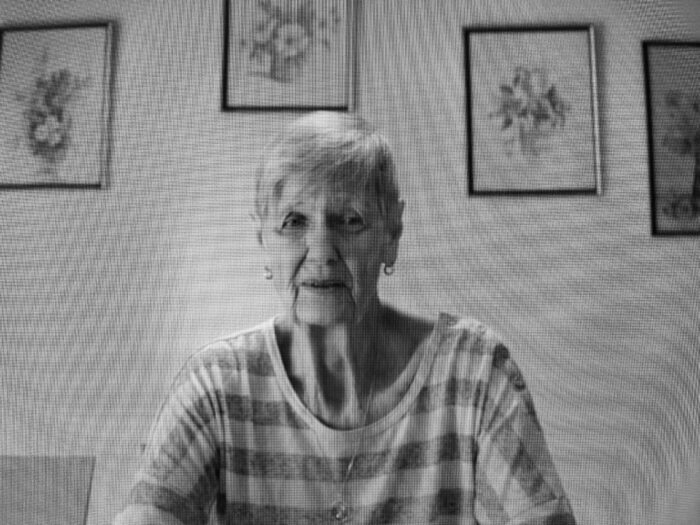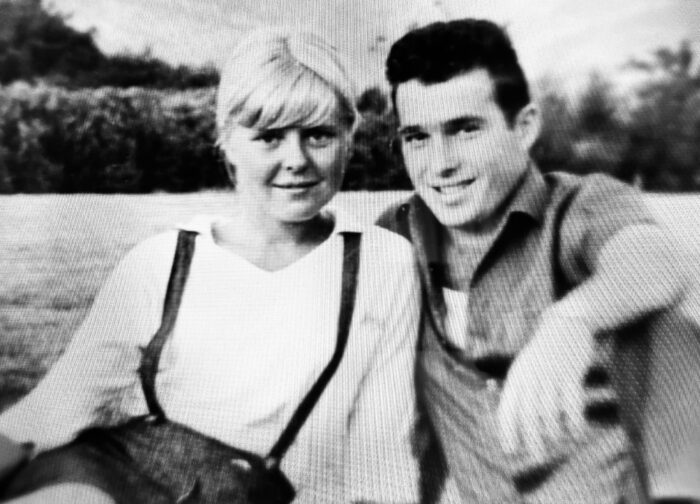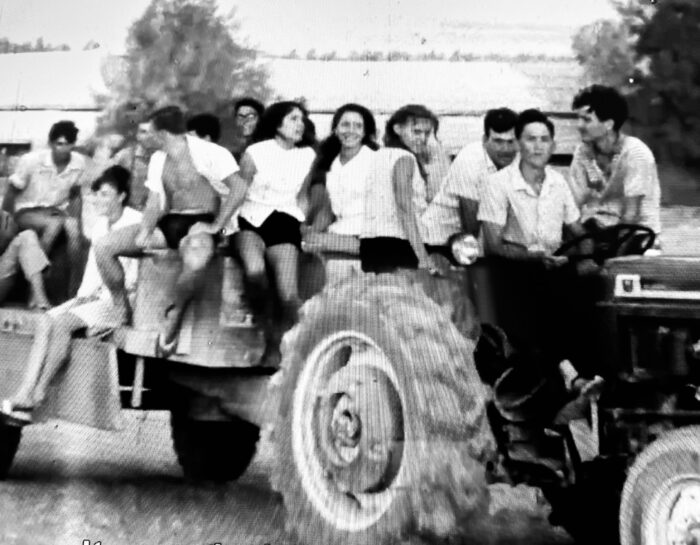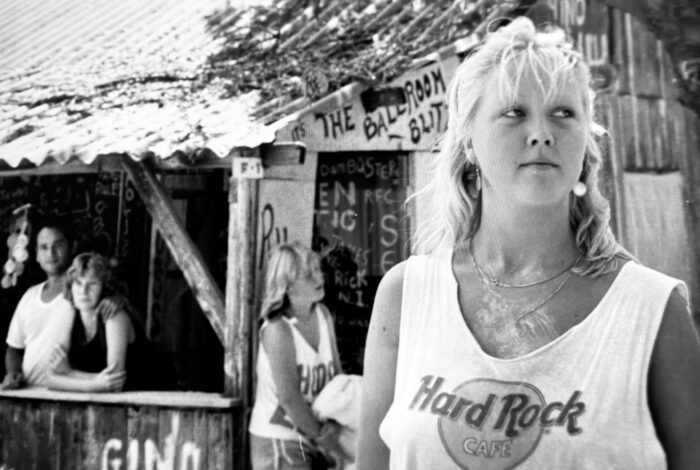Foreign volunteers flocked to kibbutzim before and after the 1967 Six Day War. Hailing primarily from Europe, the United States, Canada and South Africa, they were eager to experience the novelty of collective living. By one estimate, 6,000 foreigners arrived in Israel within a six-week period following the end of hostilities.
I was one of them.
A month after the war, I flew to Israel. After meeting my aunts, uncles and cousins in Haifa, I boarded a bus bound for Ma’agan, a kibbutz on the shore of the Sea of Galilee.
I spent the next month-and-a-half as a volunteer, waking up at the crack of dawn and fortifying myself with a jam sandwich and hot tea before starting my work day. In the fields, under an increasingly scorching sun, I picked melons and grapes.
Four years later, having finished my first and second university degrees, I returned to Israel, where I lived as a volunteer on two different kibbutzim, Ha’ogen and Ma’abarot.
Yoav Brill’s straightforward 83-minute documentary, Apples and Oranges, which is now available on the ChaiFlicks streaming platform, reminded me of my kibbutz days. He explores this topic mainly through the eyes of several European Christians who married Israelis and remained in Israel after stints as volunteers.
Strangely enough, only one Jewish volunteer appears in his movie.

The first non-Jewish volunteers who are interviewed, Kasper Breggren and Grete Elisabeth Jensen, are Swedish and Danish. They went to Israel in the early 1960s, when the kibbutz was at its height as an Israeli institution.
Breggren, enchanted by the idea of a collective community, volunteered at Neot Mordechai, a kibbutz in the Galilee close to the Golan Heights. Jensen had read Leon Uris’ best-selling novel, Exodus, and was impressed by Israel’s efforts to make the desert bloom. “I was dying to go,” says Jensen, who went to Ein Dor, a kibbutz facing Mount Tabor.
Also appearing in the film are two Britons, Paul Kimber and Paul Moore, and a handful of other volunteers whose biographies are extremely skimpy. Kimber, a future playwright, wondered whether socialism on a kibbutz actually worked. Moore married an Israeli and later split up with her.
Levi Eshkol, the Israeli prime minister during that era, urged Jewish volunteers to settle in Israel. The vast majority of volunteers had no intention of doing so, being far more interested in partying, sex and drugs than in aliya.

Whatever their motives, some of the volunteers formed relationships with kibbutzniks. As the narrator sardonically notes, native Israelis were often surprised by their habit of drinking milk with meat, thereby breaking the rules of kashrut.

A few volunteers, like Richard from Stockholm, became goodwill ambassadors for Israel in their home countries. Still others, mainly women like Jensen, formed romantic liaisons with Israelis, converted to Judaism and stayed in Israel.
By one estimate, there are 1,100 mixed couples on kibbutzim today.

The flow of volunteers into Israel slowed in 1996 and again after 2000. These dates coincide with the election of Benjamin Netanyahu as prime minister and the eruption of the second Palestinian uprising. As Israel’s international image tanked, fewer Europeans were interested in volunteering on kibbutzim, which have changed drastically since the 1960s. Meanwhile, paid workers from Thailand have replaced volunteers.
Most potential European volunteers today are much more interested in picking olives in Palestinian orchards in the West Bank — which Israel occupied in the wake of the Six Day War — than in hanging out on a kibbutz.
For Israel, the pendulum has swung in the opposite direction. Apples and Oranges distils this transformation cooly and professionally.
